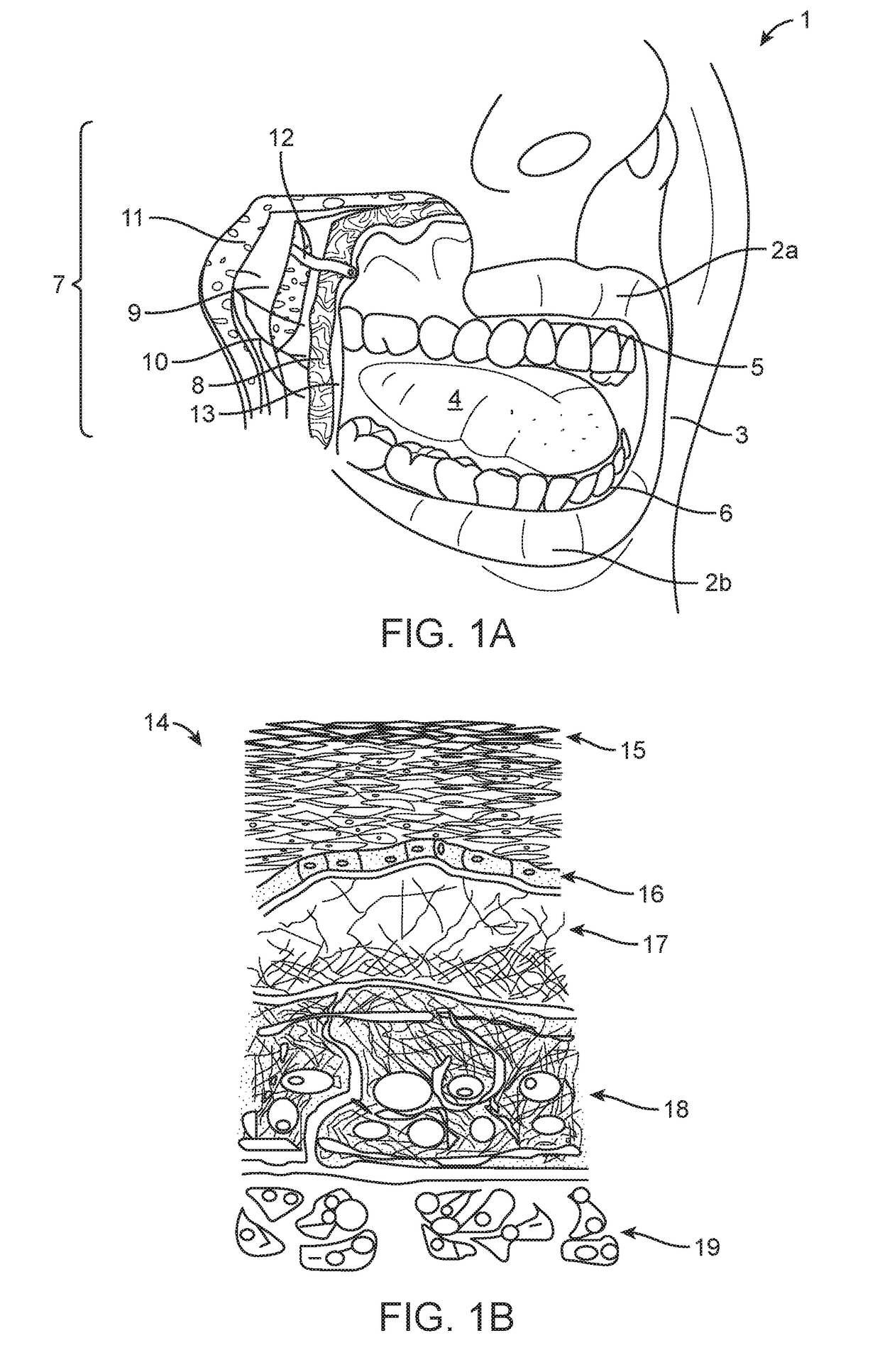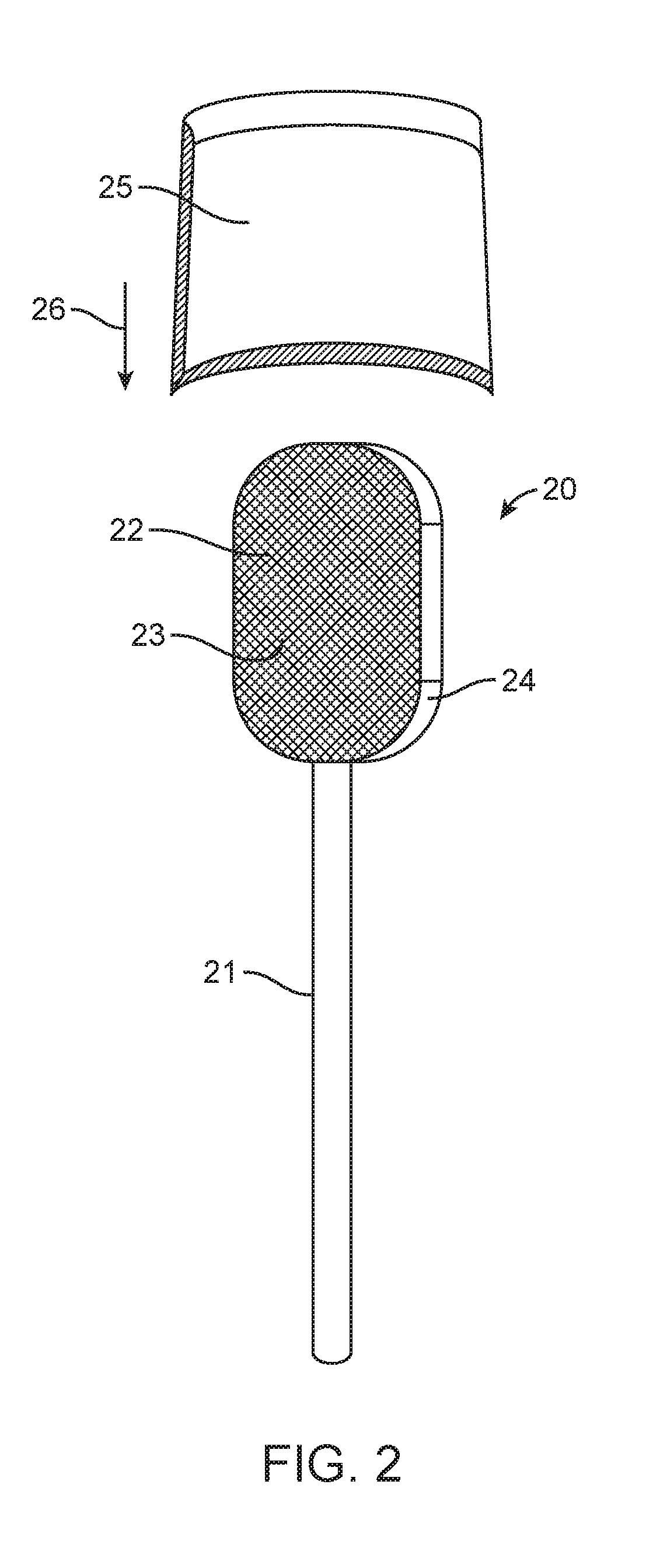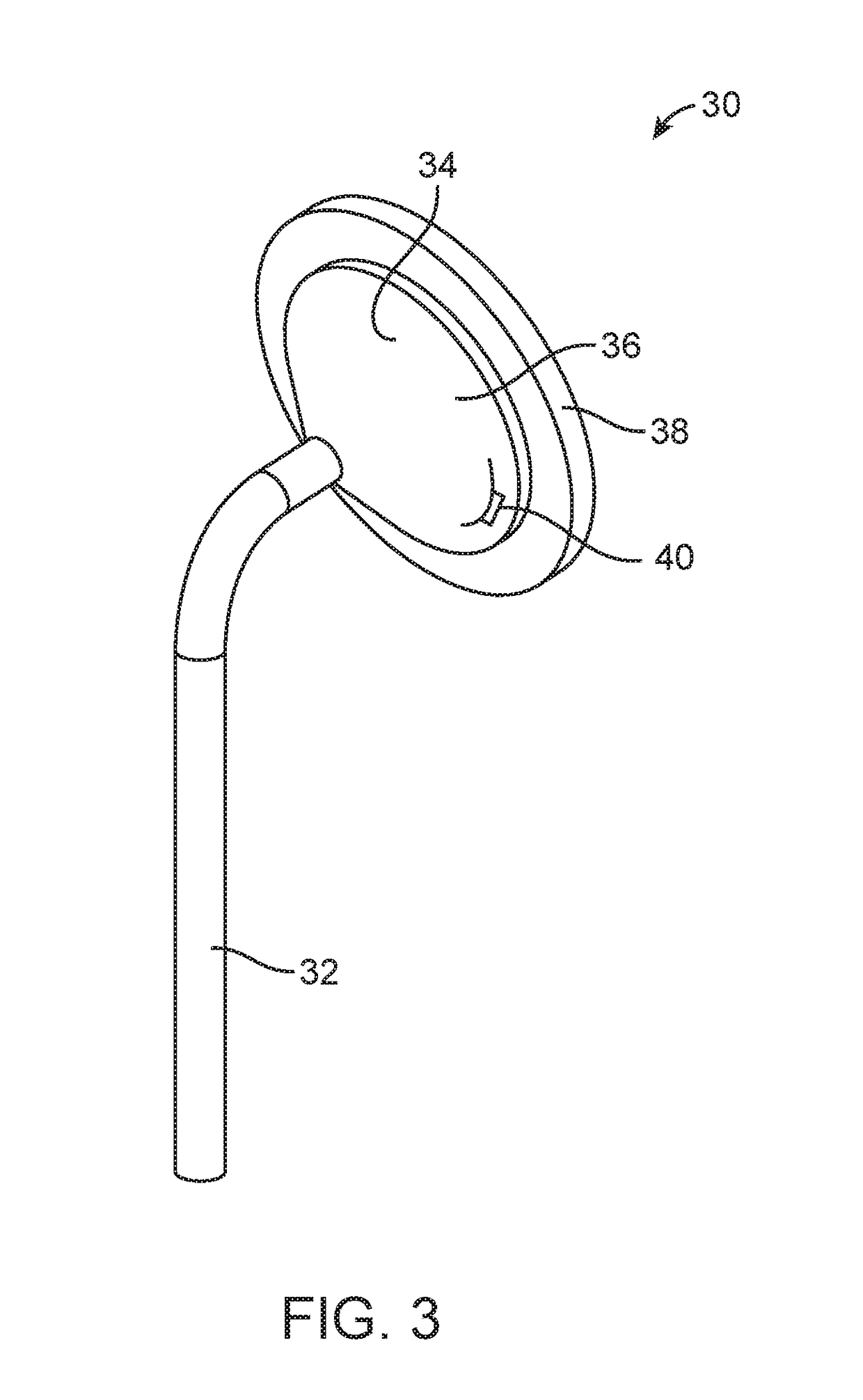Apparatus and methods for rapid transmucosal drug delivery
a transmucosal and drug technology, applied in the field of apparatus and methods for rapid transmucosal drug delivery, can solve the problems of inconvenient use of intranasal application, inability to treat medical emergencies, and inability to effectively use intranasal application in the presence of nasal congestion, mucous discharge, blood or vasoconstrictors, etc., and achieve the effect of avoiding gastrointestinal bleeding, avoiding gastrointestinal bleeding, and avoiding gastrointestinal bleeding
- Summary
- Abstract
- Description
- Claims
- Application Information
AI Technical Summary
Benefits of technology
Problems solved by technology
Method used
Image
Examples
working example 1
[0123]FIGS. 9-13 relate to outcomes from a canine (i.e., dog) PK study of naloxone delivered via buccal route compared to intramuscular administration.
[0124]i) 4 mg / ml of naloxone (in benzoin solution) were prepared. 200 microliters were pipetted onto a swab and delivered to the right side of the buccal mucosa of a canine for 10 seconds. The delivered dose was 0.8 mg.
[0125]ii) 40 mg / ml of naloxone (in benzoin solution) were prepared. 200 microliters were pipetted onto a swab and placed against the right side of the buccal mucosa of a canine for 10 seconds. The delivered dose was 8 mg.
[0126]iii) 0.4 mg intramuscular (IM) commercial injection of naloxone was administered to the canine. The delivered does was 1 ml injection of 0.4 mg / ml.
[0127]The study design included a three dog (i.e., Canis familiaris), three way crossover study. Each dog received each of the two buccal solution and an IM injection on successive weeks such that there was a one week rest interval between dosing groups...
working example 2
[0130]FIG. 14 relates to an outcome from a canine PK study of epinephrine delivered via buccal route compared to intramuscular administration.
[0131]The study design included using a Beagle (i.e, Canis familiaris). One dog received a buccal solution swab and one dog received an IM injection. Blood samples of the canine were taken for PK analysis.
4-5 mgTESTFIGUREBUCCAL0.3 mgPARAMETERNUMBERSWABINTRAMUSCULARTmax1312 ng / ml1.7 ng / ml
[0132]FIG. 14 is a histogram of Tmax comparisons of buccal versus intramuscular injection of epinephrine according to some embodiments of the invention. The epinephrine data is from two separate experiments using a dog study model. Epinephrine is an endogenous catecholamine hormone with levels that can fluctuate rapidly due to many factors, including the excitability of the dogs being prepared for a PK study, for example. Additionally the half-life of epinephrine is between about 3-8 minutes. This explains variability in basal levels that fluctuate rapidly (e.g...
PUM
| Property | Measurement | Unit |
|---|---|---|
| area | aaaaa | aaaaa |
| pressure | aaaaa | aaaaa |
| volatile | aaaaa | aaaaa |
Abstract
Description
Claims
Application Information
 Login to View More
Login to View More - R&D
- Intellectual Property
- Life Sciences
- Materials
- Tech Scout
- Unparalleled Data Quality
- Higher Quality Content
- 60% Fewer Hallucinations
Browse by: Latest US Patents, China's latest patents, Technical Efficacy Thesaurus, Application Domain, Technology Topic, Popular Technical Reports.
© 2025 PatSnap. All rights reserved.Legal|Privacy policy|Modern Slavery Act Transparency Statement|Sitemap|About US| Contact US: help@patsnap.com



